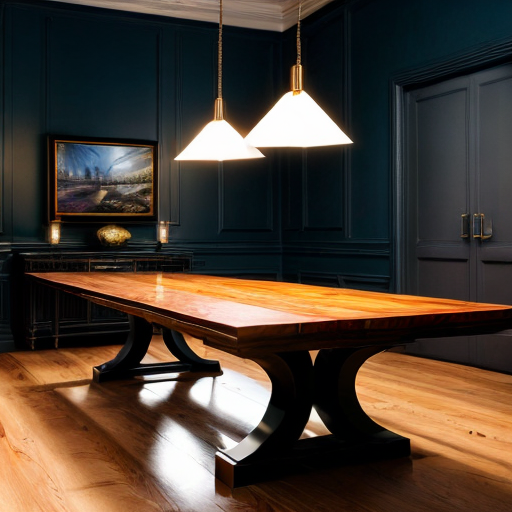So, you've finally decided to take the plunge and give your table a fresh coat of polyurethane. Good for you! Now, before you dive headfirst into this sticky adventure, let's talk about the importance of the number of coats you apply. Think of it like this: one coat is like wearing a raincoat in a drizzle – it might protect you a bit, but you'll still end up a little damp. Two coats, on the other hand, is like wearing a raincoat and carrying an umbrella – you're pretty well covered. But if you really want to go all out and be the ultimate table protector, then three coats of polyurethane are like wearing a raincoat, carrying an umbrella, and having a backup poncho in your bag, just in case. So, my friend, don't skimp on the coats – give that table the protection it deserves!
Did you know that a typical dining table can have anywhere between 3 to 7 coats of polyurethane applied to its surface? This multiple layering technique not only enhances the table's durability and resistance to scratches and stains but also adds a beautiful glossy finish. Each coat is carefully applied, sanded, and then reapplied to create a smooth and flawless surface, resulting in a stunning piece of furniture that can withstand the test of time.
When it comes to deciding how many coats of polyurethane to apply on your table, there are a few factors to consider. First and foremost, think about the level of use and abuse your table will endure. If it's a high-traffic area where spills and scratches are bound to happen, then more coats might be necessary. Additionally, take into account the type of wood and its porosity. Some woods may require more coats to achieve the desired level of protection. Lastly, consider your own patience and commitment to the project. Applying multiple coats can be time-consuming, but the end result will be worth it. So, weigh these factors carefully and find the perfect balance of coats to ensure your table stays beautiful and resilient for years to come.

When it comes to protecting your table surfaces, multiple coats of polyurethane can be a game-changer. Sure, one coat might provide some level of protection, but why settle for just 'some' when you can have 'ultimate'? By applying multiple coats of polyurethane, you are essentially building layer upon layer of defense against the daily wear and tear your table will inevitably face. Think of it as creating a shield that can withstand spills, scratches, and even the occasional hot coffee mug mishap. Each coat adds an extra level of durability, ensuring that your table remains in pristine condition for years to come. Not only does the number of coats enhance the physical protection, but it also enhances the aesthetic appeal. The more coats you apply, the deeper and richer the finish becomes, giving your table a luxurious and polished look. Additionally, multiple coats of polyurethane provide added resistance to UV rays, preventing your table from fading or yellowing over time. So, don't be afraid to go the extra mile and give your table the love it deserves. Apply those multiple coats of polyurethane and revel in the benefits of a table that not only looks great but can withstand whatever life throws its way. Trust me, your table will thank you for it.
Did you know that a typical dining table can have up to 10 coats of polyurethane applied to its surface? This not only gives it a beautiful glossy finish but also provides excellent protection against scratches, spills, and everyday wear and tear. So, next time you admire a shiny table, remember that it might have gone through quite a few layers of polyurethane to achieve that stunning look!
When it comes to applying multiple coats of polyurethane on your table, it's important to follow a step-by-step guide for optimal results. First, ensure that your table is clean and free of any dust or debris. Next, lightly sand the surface to create a smooth and even base. Once prepped, apply the first coat of polyurethane using a high-quality brush or foam applicator, making sure to follow the wood grain. Allow the first coat to dry completely before lightly sanding it with fine-grit sandpaper. This step helps to create a better bond between coats. Repeat the process for the second and third coats, ensuring each coat is dry and sanded in between. Remember, the number of coats will depend on the level of protection and aesthetic you desire. Finally, after the final coat has dried, gently buff the surface to achieve a smooth and glossy finish. By following these steps, you can achieve a beautifully protected table that will withstand the test of time.